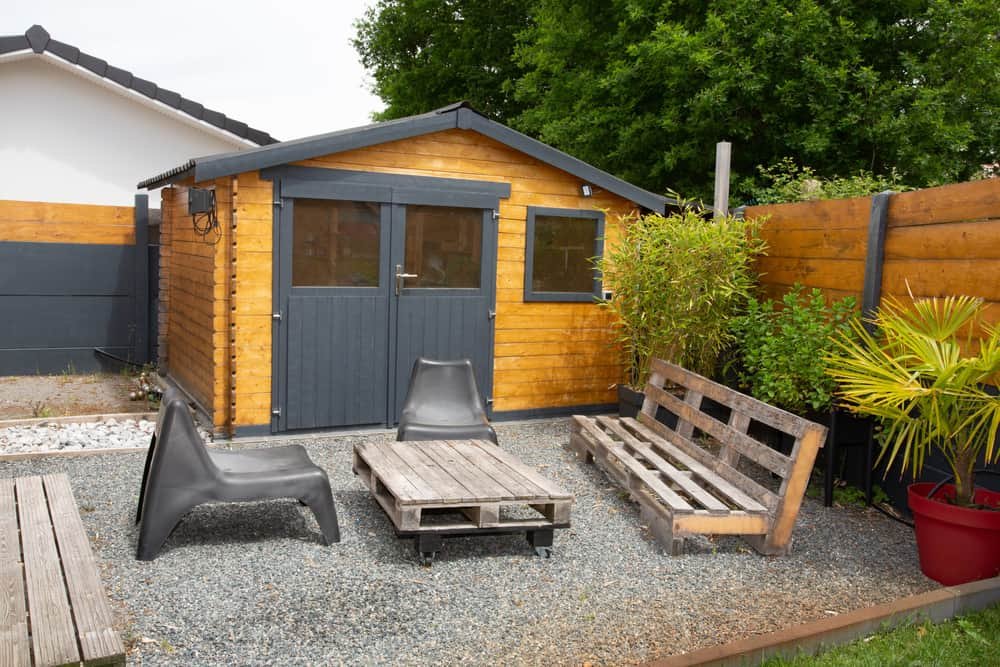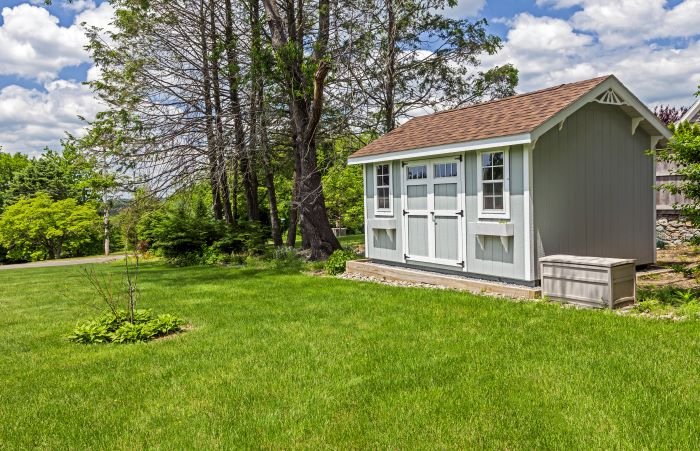What is the Best Way to Heat a Shed?
Sheds can be used for storage, workshops, or lately as offices. As remote work takes off, sheds are being rapidly converted to backyard offices.
Sheds sometimes do not have electricity and most are not insulated, so when outdoor temperatures drop, your shed may get very cold. The cold can damage equipment and can be uncomfortable to work in no matter how it’s being used.
If you want to heat your shed, add insulation to keep the heat in, bring in a portable heaters, and/or a pellet or wood stove.
The best way to heat a shed is to use a portable electric heater, as these are easy to use and less hazardous. If you don’t electricity, a portable propane heater suitable for indoors will work best.

There are many different ways to keep your shed warm in the cold. Some require an electricity source, some require fuel such as wood or propane. This article will help to find the best shed-heating solution for you.
[amazon table=”10296″]
Table of Contents
Use a Heater
There are many different kinds of heaters you can bring into your shed for warmth. These options depend on power supply. If you have access to electricity, an electric heater may be the easiest to use.
If you do not, then your best bet may be a propane or kerosene heater rated for indoor use. Be careful if your gas powered heater doesn’t specify indoors. If not, you will need to make sure your shed is well ventilated.
Electric space heaters require a power supply. Electric space heaters are powerful and efficient and will have your shed warm, even hot, in no time. These are the least expensive out of the three and come with timers to shut off for added safety.
Portable propane heaters do not require electricity. If your shed is off the grid or powerless, propane heaters are a great way to heat your shed. This option is more expensive than electric, but worth the investment if you spend a lot of time in your shed.
Kerosene heaters are more expensive than propane heaters but work just as well. They produce a lot of heat and do not require a power supply. Out of the three, the kerosene heat is probably the most efficient. The one listed above will work 14 hours on 1 gallon of kerosene.
As with all of these options, this heater needs to be shut off while you are not in the shed, to prevent fires. Each of the three heaters above should only be in use while a person is present.
Keeping a Shed Warm While You Are Not Present
The above shed-heating options require you to be present while they are on. Electric and propane heaters alike require a certain amount of supervision so that a fire is not accidentally started while you are away.
The following heating options will be able to run while you are not present, and when set up responsibly, do not pose safety/fire hazards.
If your shed has access to electricity, a good option for unsupervised heating is an electric radiator. Radiators emit a lot of heat but can be turned down very low so that your shed maintains a warm temperature that is (at least) above freezing. Radiators are safe and can run all day.
Another, more expensive option is to install heated flooring in your shed. Heated flooring will radiate heat from underneath and keep your belongings and equipment safe from freezing over in the winter.
Heated flooring can run all day and night without posing a fire or safety hazard. This option does require electricity and can be difficult to install.
Other Ways to Heat Your Shed
Up until this point, the heating options listed might not work for you or your situation. You may not have access to electricity, have the proper ventilation for a kerosene heater, or have the funds for a radiant floor heat or solar heater.
If this is the case, then some other options that will effectively heat your shed include:
- Wood or Pellet Stoves
- Rocket Stoves
One option is to install a wood stove in your shed. Wood stoves are historically one of the most popular ways to heat homes. They produce massive amounts of heat and only require wood or pellets to burn.
Wood stoves do require a form of chimney, so this may not be the best option if you are not willing to install a smoke exit within your shed. These would only be suitable for very large sheds or off-grid homes.
Rocket stoves can be bought or made yourself with bricks or metal piping. They do not require electricity, only a fuel source for the fire. To be used indoors, the rocket stove will need to be sealed with a flue, just as the wood stove.
They provide a relatively safe and effective way of heating areas. If your shed is large, this may be a good option for you.
Insulate Your Shed to Retain Heat
Most pre-made sheds are not insulated. Insulation is a fluffy material (typically made of fiberglass) that can be installed within walls to retain heat.
If your shed is not insulated, it is recommended that you first insulate your shed’s walls before you add any kind of heat source. Installing insulation is relatively easy, and inexpensive.
If you do not insulate your shed’s walls, the heat coming from a heater or stove won’t be retained and will cost you money by using more electricity or propane. To optimize the energy from your heat source, invest in some rolls of insulation and a second layer of wallboard.
Insulation normally goes between the drywall and roofing/siding of your home. Sheds typically only have one layer of wall materials. Adding insulation and second layer will help keep cold and heat out of your shed.
You can staple or nail the insulation right to the inner walls. The insulation will stick out, so most people screw, staple or nail an additional covering over the insulation like drywall or wood paneling.
Be careful when installing insulation. Fiberglass can cause tiny splinters on your skin if you brush up against it. Make sure you are wearing gloves when you install it, and if you can, cover the exposed side of the insulation with another layer of material.
Conclusion
There are many different ways to heat a shed. Your options are not limited to this article. If you are willing to install a fireplace or other wood-burning mechanism, that might be the best option for you.
Your heating options, at the end of the day, rely on power sources, funds, and your willingness to modify your shed to make different options work.
The most important thing to install if you want to keep your shed warm is insulation. This will increase heat retention by a thousand times, especially if you install it in your flooring as well.
Whatever method of heating you choose, be sure that insulation is your priority. Best of luck to you in your shed-heating endeavors!

